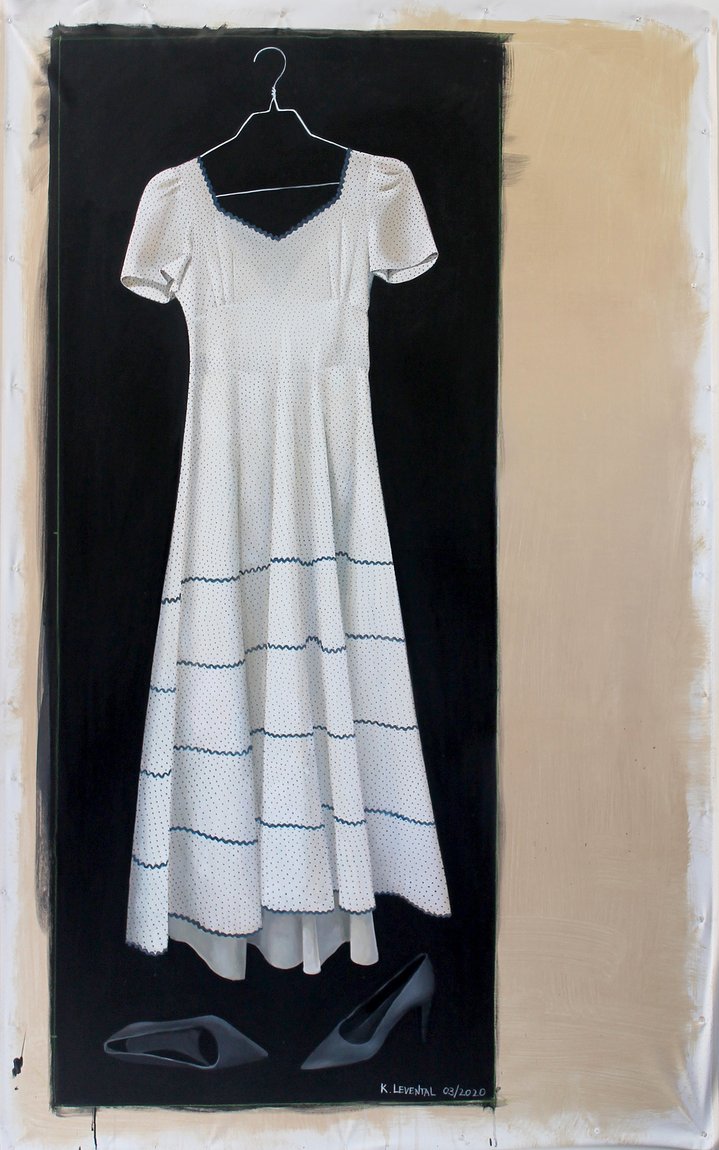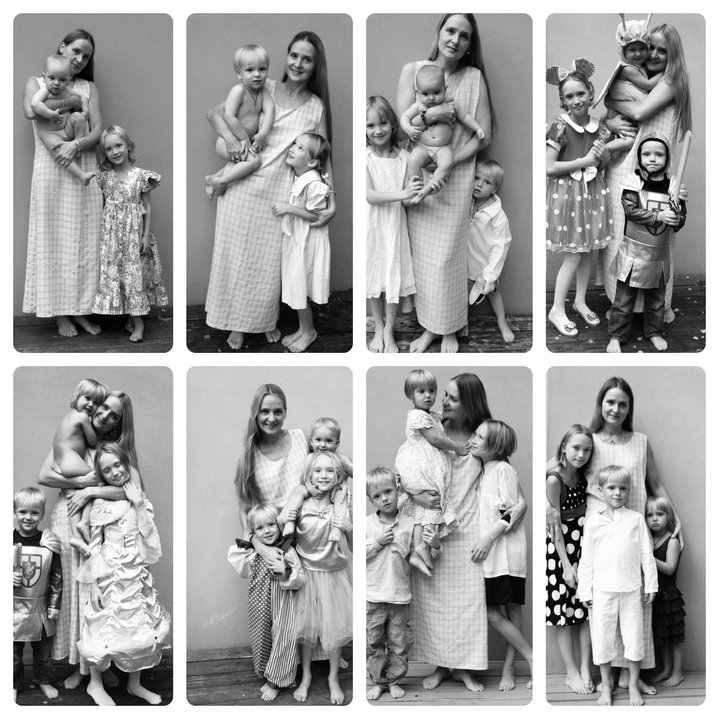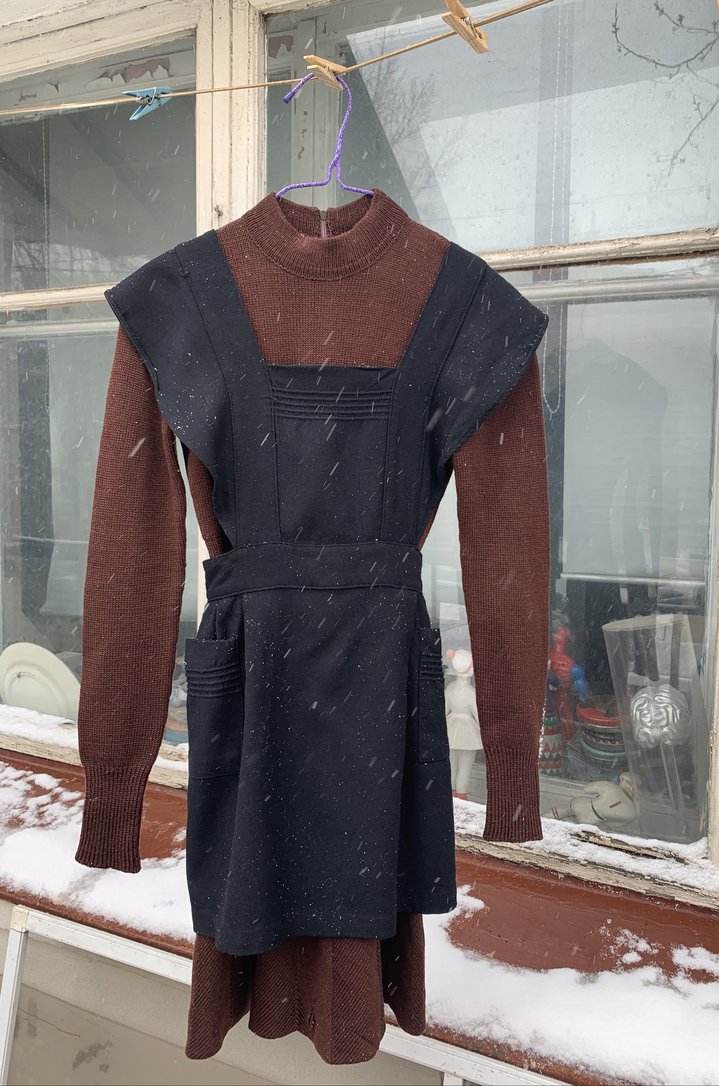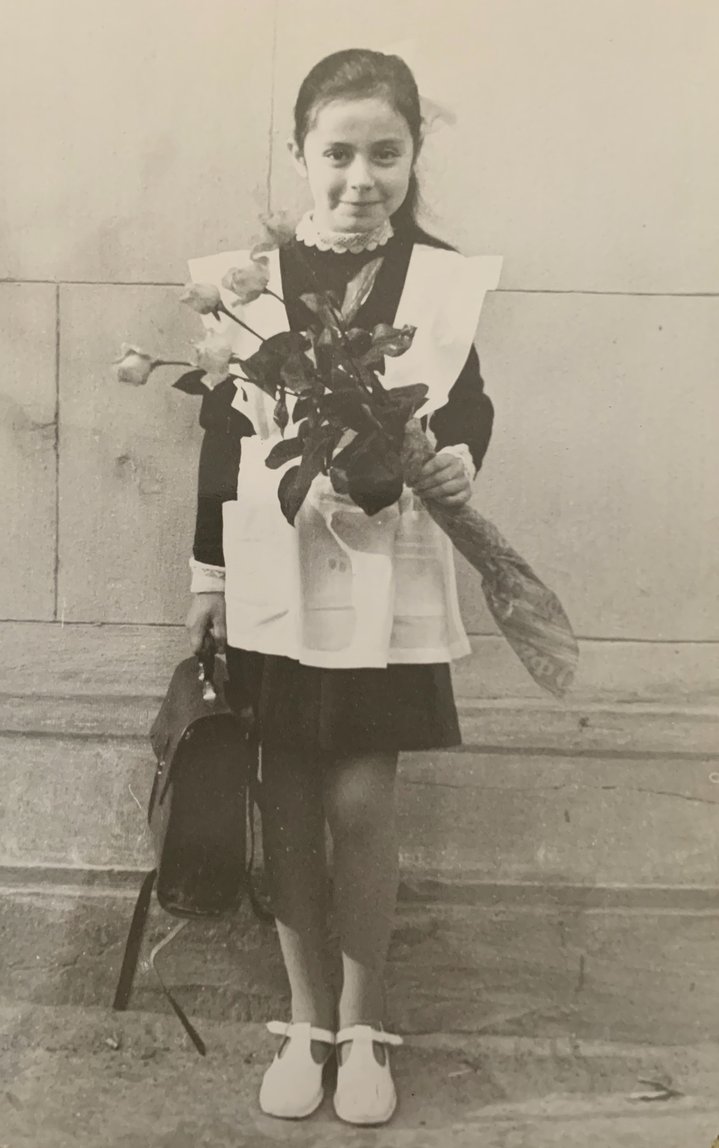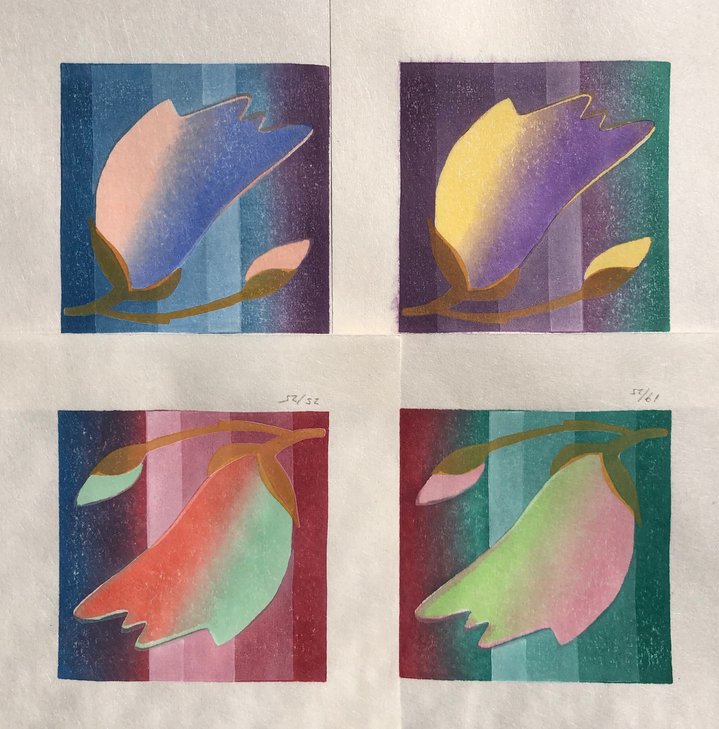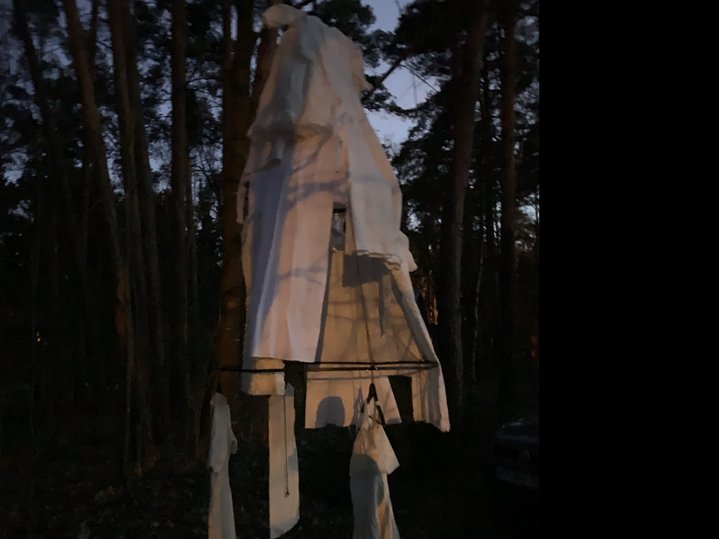A dress code for outer space
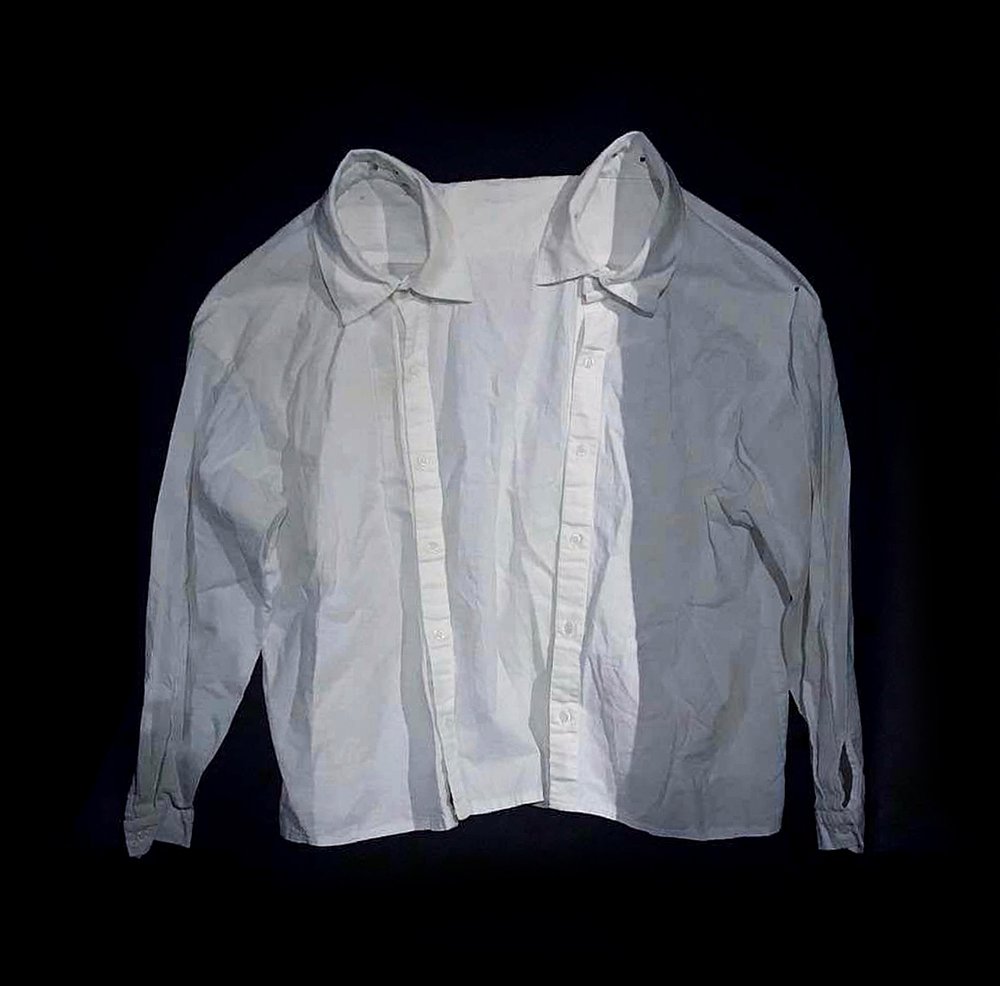
Natasha Ivanova. Twins shirt. 2020. Courtesy of the artist
The ‘My Personal Cosmos’ exhibition in the Russian city of Kaluga takes a surprising feminine slant in approaching the subject of outer space: through dresses.
“We each have a dress. Many dresses. We’ve been dressed since childhood, like dolls. Then we started dressing ourselves. […] Clothes are the fabrics we’re wrapped in at the start of life, and at its end. […] Clothes are the material, the fabric. Fabric is a notion closely connected to space,” writes the exhibition’s curator and participating artist Katya Rozhkova (b. 1969). It posits the dress as an individual cosmos (the Russian word for space) for the wearer, in this instance, 10 female artists.
Planned to open on 16 May at the Innovative Cultural Center in Kaluga, ‘My Personal Cosmos’ is part of the annual Tsiolkovsky Fest Art Kaluga Contemporary, that, in its turn, is a part of Russia’s 14th nationwide Museum Night, which has been going from strength to strength. However, the dates are very likely to be shifted due to the Coronavirus epidemic.
The location, a couple of hours by train from Moscow, is the picturesque provincial town of Kaluga on the Oka River, renowned for being the home of legendary rocket scientist and philosopher, Konstantin Tsiolkovsky (1857-1935), who was the forerunner of space travel. An enigmatic character in his lifetime and one who remains so to this day, this reclusive eccentric was severely deaf and his intellectual achievements were largely the result of self-education.
The Tsiolkovsky State Museum of the History of Cosmonautics, an astounding memorial to the space travel era, which nestles in this quaint corner of the Russian countryside, was erected here in his honour. The museum’s cornerstone was laid in 1961 by the Soviet cosmonaut Yuri Gagarin. The Innovative Cultural Centre next door, erected half a century later, is devoted to showcasing contemporary art and experimental cutting-edge culture.
Juxtaposing their femininity to the neighbouring colossus of Soviet culture – a fascinating, but certainly male-dominated space, the 10 participating female artists are each represented by an actual item of their clothing (the “dress”); their personal story and their artwork on the subject. Rozhkova, the exhibition’s curator, will display a personal family relic, her grandmother’s white wartime wedding gown made of parachute silk procured by her fiancé, a trainee pilot. Rozhkova has collected other white dresses, which women have been sending her from all over the country, each bearing a personal story in its seams.
The Arendt sisters, Maria (b. 1968) and Natasha (b. 1959), channel their contribution through their grandparents, who in turn had a connection with Tsiolkovsky and Kaluga: their grandfather created an impressive monument to Gagarin, which was recently donated to the museum, while his wife corresponded with the great scientist.
Included among the other participants is 82-year-old Irina Solovyova. Her contribution is a simple white shirt with just four digits embroidered, ‘2500’. That is the number of parachute jumps she made as part of the strenuous training programme to become the first female Soviet in space, a goal she never achieved. That honour went to Valentina Tereshkova, a textile worker who told the Guardian newspaper she had 90 jumps under her belt. Solovyova did her last parachute jump at the age of 55 and still trains cosmonauts in the Moscow region’s renowned Star City.
The exhibits thus meander through fact and fiction, history and dream-space, oscillating from intimate family relics to grand Soviet space age ambitions and dreams that were partly realised and partly thwarted in a medley of feminine melancholy wrapped in these seemingly peripheral dresses.
“Is it possible to establish a dialogue with the universe from a scrap of cloth, a dress, a shawl, a ball of wool or an old scarf?” asks Boston art historian Rada Landar, pondering on the synthesis of the earthly and the interplanetary.
For all its originality and colour, the exhibition certainly raises questions, the main one being whether or not it manages to produce enough answers to legitimate this very broad approach that relies on the personal stories of just 10 participants.








